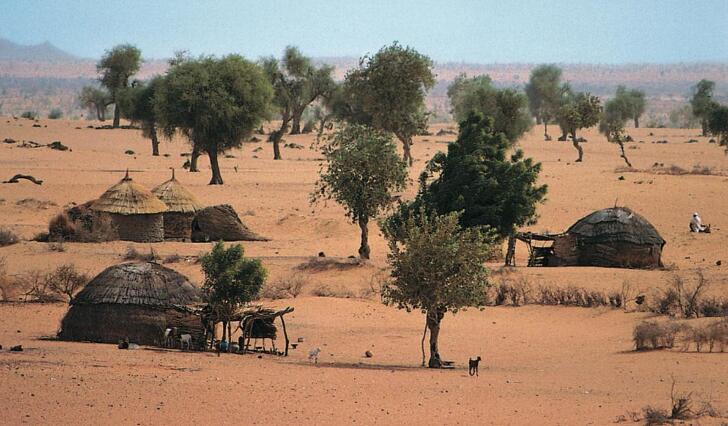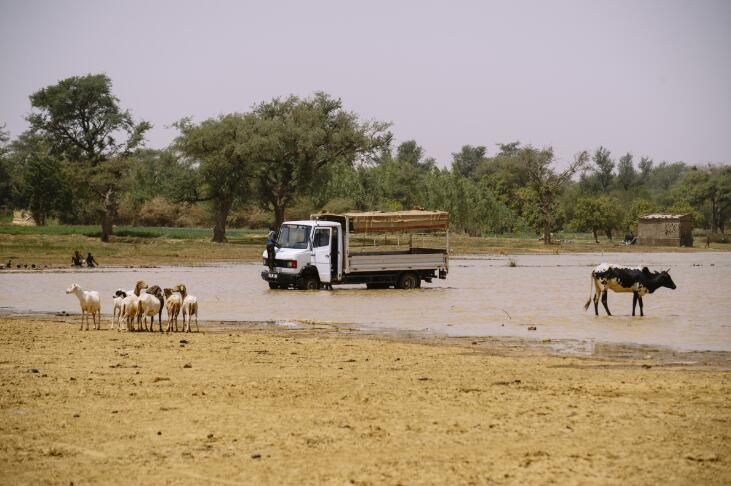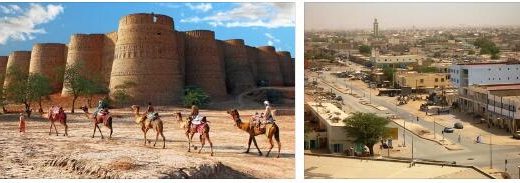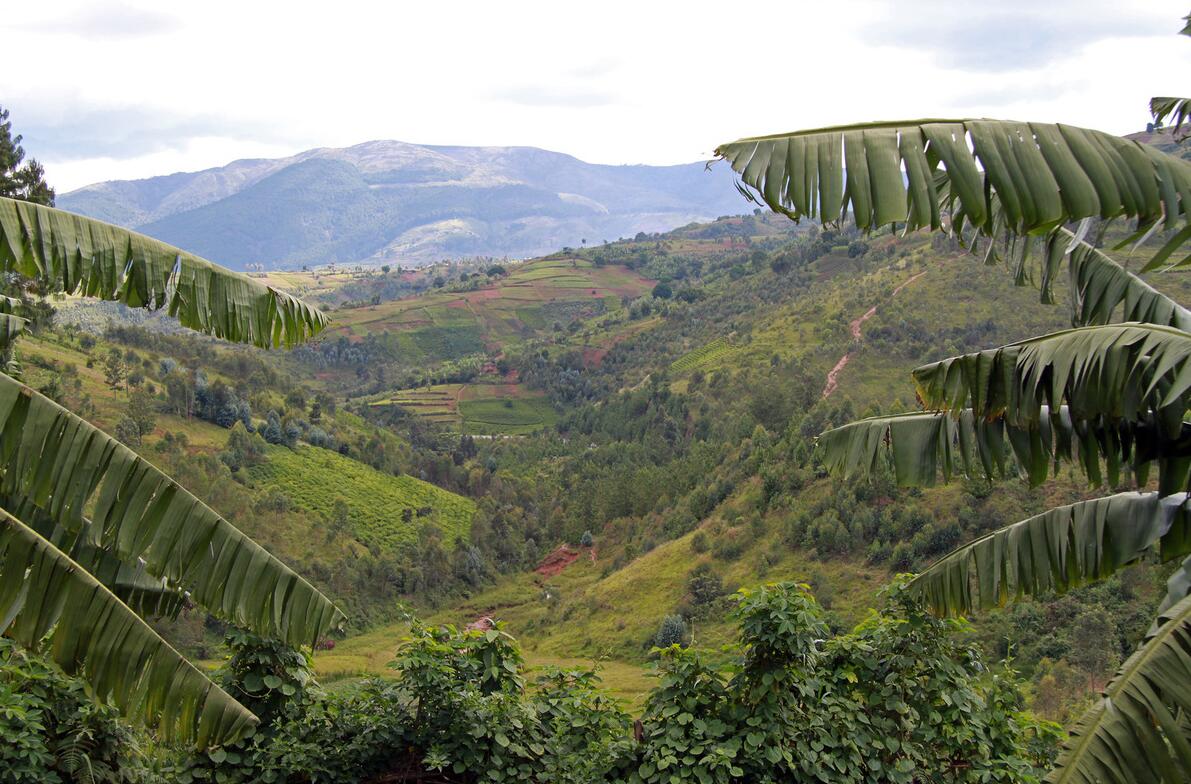Economics and Business in Burkina Faso
Burkina Faso is an agricultural land with limited natural resources in the dry Sahel belt of West Africa. Climatic conditions, with irregular rainfall and constant lack of water, do not facilitate the conditions for large-scale agriculture, and most of the production takes place by traditional methods – essential for local consumption. The country has several known mineral deposits, but only a small part is recovered. A generally poorly developed infrastructure, and the great distance to the sea and ports, are an obstacle to mining as well as industry. For several periods, Burkina Faso has been hit by severe drought, which has reduced both agricultural production and animal husbandry.
Burkina Faso is one of Africa’s least economically developed countries, with limited prospects for economic growth. Natural conditions limit the opportunities for both agriculture and industry, and the country is therefore heavily dependent on employment opportunities in neighboring countries and foreign aid. Around two million Burkinians work in neighboring countries, most of them as farm workers, and the money they send home is an important source of income for the country. Political conditions in these countries, especially the Ivory Coast, affect the opportunities for employment and transfer. Foreign development aid is also a significant source of income; Among the most important aid providers are France, Germany, the Netherlands and Denmark, as well as the EU and other multinational bodies. This and changing climatic conditions significantly affect the financial results, which can therefore vary greatly from one year to another.
In the 1990s, Burkina implemented a structural adjustment policy, and towards the end of the decade a new phase in the privatization of state-owned business was implemented. The devaluation of the West African currency CFA, which is also associated with Burkina Faso, by 50 percent in 1994, boosted exports, but made imports more expensive – and weakened purchasing power for the ordinary citizen.
Agriculture
Agriculture is the main industry and employs a large majority (over 80 per cent) of the population, but accounts for just under 32 per cent of gross domestic product (2015). Much of the total land is in a dry zone, with irregular rainfall and limited groundwater resources, and is not suitable for agriculture. Agricultural production is mainly carried out on small farms without artificial irrigation, and is mainly for local consumption. Weakly developed infrastructure makes it difficult to get the products sold.
In the 1990s, cotton took the position as the country’s most important export item, after peanuts. As a result of significant investments from both the government and international aid, in the early 2000s, cotton accounted for well over half of the total export value. It is grown sorghum in the south and millet in the north, as well as corn, rice, yams, taro and cassava. It is also focused on the production of charity nuts, cashews and sugar. Animal husbandry is the most important food route in the large and sparsely populated areas in the north and east, and is partly run as a nomadic farm. Meat,hides and skins are important export goods, and accounted for almost 20 per cent of export value in 2001; a significant portion is exported unofficially.
Mining industry
Burkina Faso has some well-known mineral deposits, including gold, silver, manganese, bauxite, zinc, lead, nickel, titanium, vanadium and lead., but these have only been used to a small extent. This is due to both high production costs and prices in the international markets, as well as the long transport distances to the shipping ports. Around 2000, the unrest in neighboring Ivory Coast, with Burkina’s most important shipping port, led to further export difficulties. Gold is mainly mined in Poura in the western / central part of the country and exported. The extraction of manganese deposits at Tambao was only started in 1993, but stopped again in 1998 due to transport problems.
The industry is underdeveloped, and is substantially concentrated on Bobo-Dioulasso and Ouagadougou. The majority of industrial production is food for local consumption, based on the processing of local raw materials. The textile industry, first established in the 1970s, also manufactures for export. There is a cement factory in Ouagadougou. The industry experienced a slight upswing as a result of the devaluation in 1994, with increased production to replace imported goods.
Landscape with characteristic thatched huts near the town of Dori, in the northeast.
Foreign Trade
Burkina Faso has limited export production and a significant deficit in its trade with the outside world. The country relies on financial aid, as well as money transfers from Burkinians working in neighboring countries. Above all, cotton, charity nuts, peanuts, meat, cattle, hides and skins, and some gold are made. In the early 2000s, France, Ivory Coast and Belgium were the main buyers of the country’s export goods. Imports came essentially from the Ivory Coast and France. In 2017, Switzerland, India, South Africa and Ivory Coast were major export partners, while China, Ivory Coast, USA, Thailand and France were major importers. A large part of foreign trade goes over the port of Abidjanin the Ivory Coast. There is a not insignificant smuggling of goods.
Transport and Communications
Of vital importance to the country’s foreign trade is the railway between Abidjan in Ivory Coast and Ouagadougou through Bobo Dioulasso, with connection further to Kaya. A 350-kilometer extension to the manganese deposits at Tambao is planned. Until 1987, the railway was run jointly by Burkina Faso and Ivory Coast; then by two separate companies – and considerable upgrading of the railway is needed. There is an extensive but poor road network, which was somewhat expanded in the latter half of the 1990s. International airports can be found at Ouagadougou and Bobo Dioulasso.
A man washes his car in the Bam River. In many areas like this, plant life is strongly influenced by human activity and grazing.




